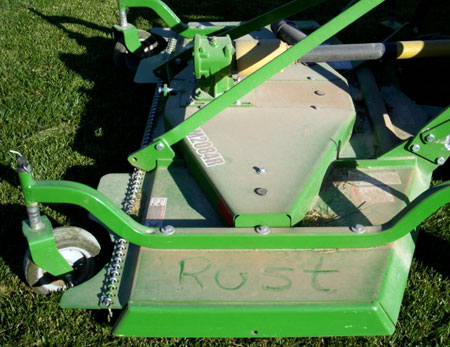September fertilization and rust on turf
Stretches of dry and hot weather this summer resulted in some lawns being stressed and slow to recover. Fertilizer applications in September will ensure the turf maintains density and competes with pests such as weeds and rust.

As summer quickly fades into the rearview mirror, late August or early September is a perfect time for a fertilizer application. Lawns throughout Michigan were stressed at different times this summer due to sporadic rainfall and high temperatures. The recent stretch of dry conditions has slowed turfgrass growth in some areas.
Almost on cue, as growth slows in late summer, rust sightings become common. Rust is the disease homeowners notice when their white tennis shoes and white poodles traverse through the lawn and come back in looking less than white. There are several types of rust: stem rust, crown rust, leaf rust and stripe rust. As a general rule in almost all cases, rust is considered a cosmetic turfgrass disease that, although it may discolor the turf, will not result in turfgrass death.
If you find yourself inundated with a bad case of rust, keep up on your mowing and a September fertilizer application should help stimulate turf growth that will help diminish the impact of the rust. Read more details on rust from Michigan State University Extension.

For the September fertilizer application, choose a fertilizer that has slow release nitrogen in the analysis such as sulfur-coated urea, polymer-coated urea or methylene urea. I would generally avoid applying 100 percent fast release nitrogen fertilizers such as urea at this time of year as they can force too much top-growth that results in more mowing and reduced rooting. Remember that phosphorus restrictions in Michigan limit phosphorus applications in most instances except when a soil test indicates the need and also impacts the use of many natural organic fertilizers that contain phosphorus. Read more on phosphorus fertilizer restrictions in Michigan.
Fertilizing in September will result in moderate top-growth and give the turf some extra energy to develop roots and continue to compete with weeds that have been particularly troublesome this year.
Dr. Frank’s work is funded in part by MSU‘s AgBioResearch.



 Print
Print Email
Email
